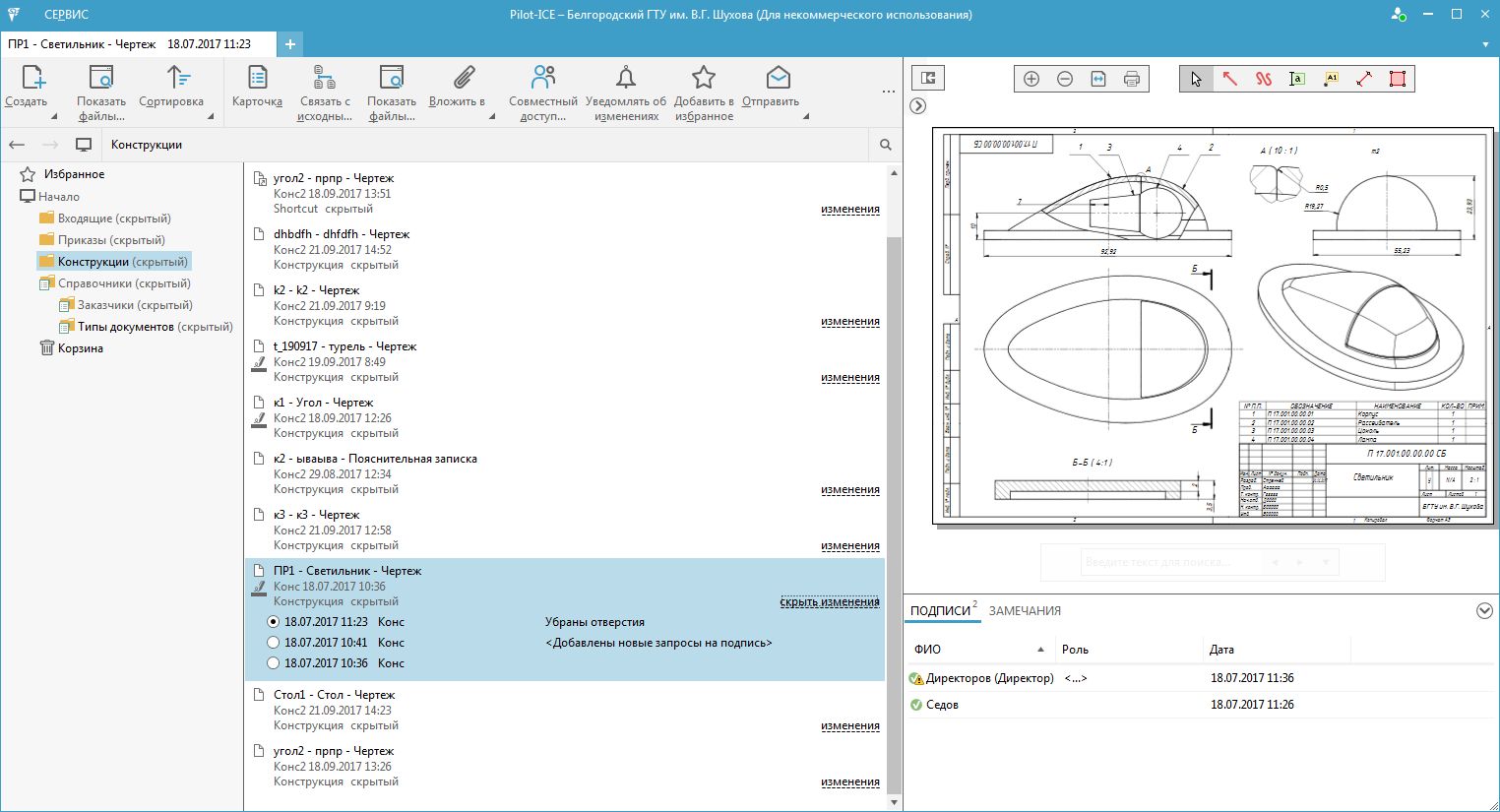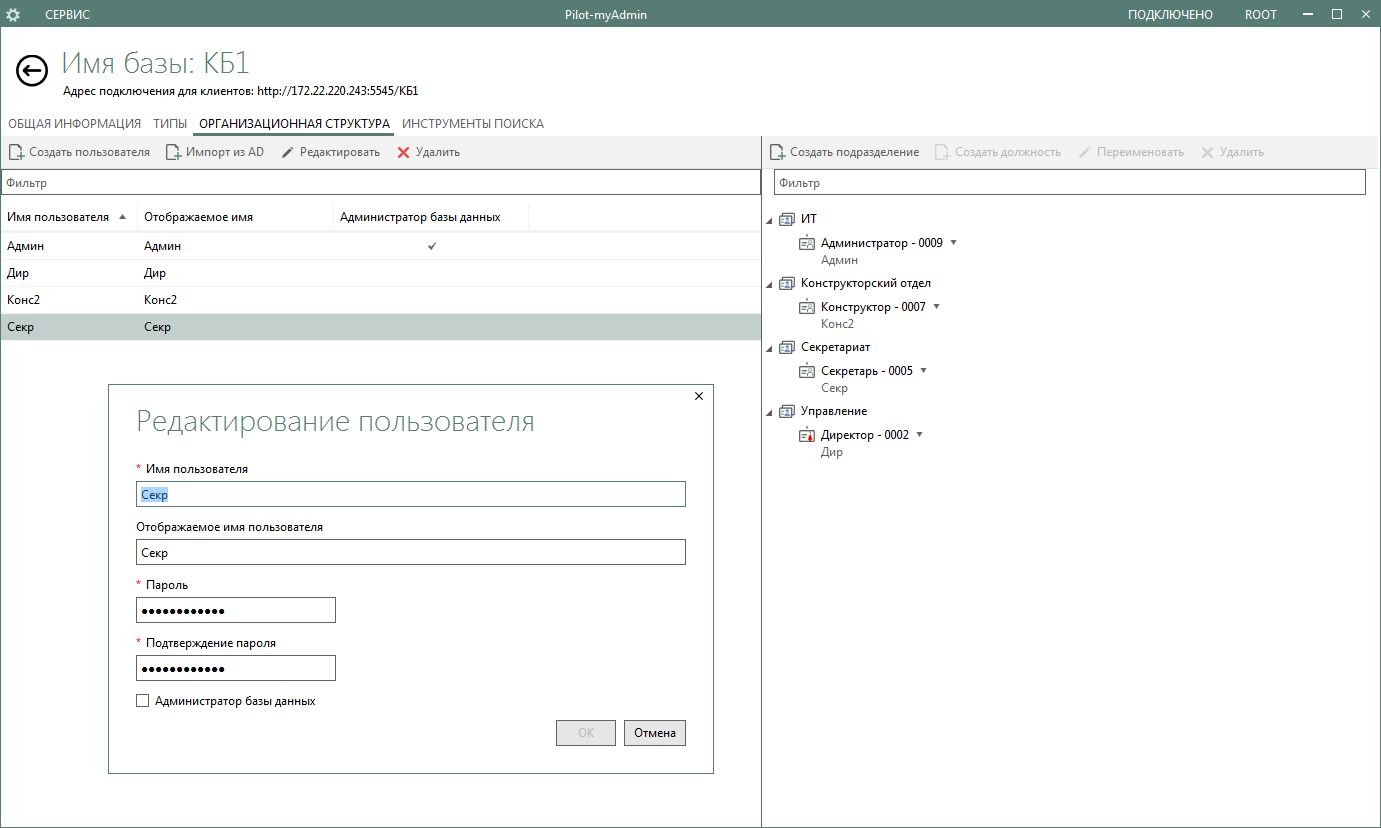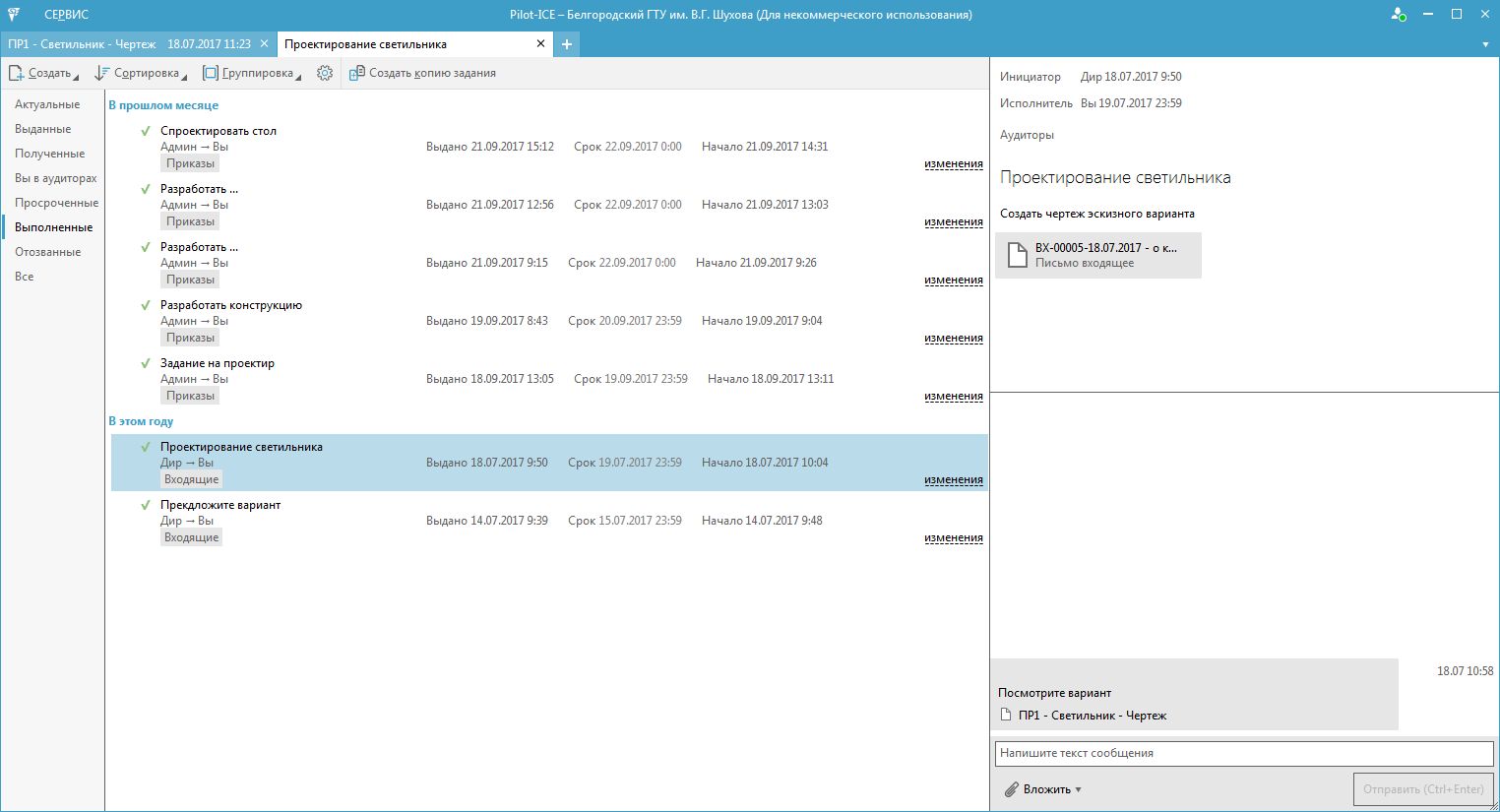Teamwork and electronic document management. University study experience
The last ten days Habr with the filing of aleshqqa1337 discusses IT education. We publish a note of a teacher working in a technical college, on how the program of the new discipline “Electronic Documentation and Collective Work Systems” was developed, on what criteria the software was chosen for training and what tasks the students perform.
The author is Alexander Y. Stremnev, Ph.D., Associate Professor of the Department of Information Technologies, Belgorod State Technological University. V.G. Shukhov.

In 2016 at the Department of Information Technologies of the Belgorod State Technological University. V.G. Shukhov was started training under the master's program in the specialty "Information systems and technology." In this direction in the current academic year will be the first graduation of masters. The global goal of the training is to master a wide range of software systems related to various application areas, such as business, public service, medicine, education, multimedia, geoinformatics, CAD. Masters should not only explore the possibilities of the appropriate software, but also gain practical skills in the field of system integration. The curriculum of masters-ITshnikov includes, among others, the discipline “Systems of electronic documentation and teamwork”, the development of which was entrusted to me by the leadership of the department. The process of preparing a work program of any discipline includes the choice of a software platform, lesson planning, and the release of necessary guidelines, manuals and manuals.
')
The first task that I faced in developing the discipline was the choice of a basic software platform. Perhaps this is the most important stage, since it depends on it whether knowledge will be useful for students not so much about a specific software, as about a whole class of systems, its functions, settings, principles of use.
What aspects of the work of electronic documentation systems (EDMS) would like to pay the most attention in the educational process? The list is approximately as follows:
Several variants of systems for the implementation of electronic document circulation were considered. In the selection process, I was guided by four criteria:
In our university, Lotus Notes is used for internal workflow for several years, but, in my opinion, according to the above criteria, serious claims can be made to this system under clauses 2 and 3.
Other options, such as VerDox, DEAL, Alfresco, require the installation and configuration of a rather “heavy” DBMS.
Since I am an engineer in the field of CAD in my profile and am pursuing a corresponding undergraduate course, one of the directions for finding a suitable EDS took place in my native design field. Moreover, some teamwork experience was available in the Autodesk software on the Fusion 360 platform. This system is developing quite dynamically and is an extremely rich “combine” function, containing 3D-modeling tools, engineering analysis, CAM and visualization. Fusion 360 also includes basic tools for teamwork, but in my situation two circumstances prevent this product from being used. Firstly, this system is focused on the "cloud", and in the conditions of the university it is difficult to organize workplaces with broadband access to the Internet. The second point is related to licensing terms - free student Fusion 360 is limited in terms of the division of user rights (all project participants, in fact, become administrators).
Therefore, my search continued, and I decided to study in more detail the palette of existing SED in the field of CAD. To be honest, in the industry magazines "CAD and graphics" and "CAD / CAM / CAE Observer" articles on the SED, previously viewed "diagonally", but when the need arose, I had to plunge into this relatively new field. The abundance of the SED market was somewhat discouraging. And, oddly enough, I made a reference ... Compass-3D. I didn’t work in this CAD system, but I’ve heard that this system of the domestic company ASCON is quite popular in Russia and the CIS countries. I was also aware of the rather interesting policy of ASCON in relation to educational institutions - the provision of educational and student versions. And so, in one of the issues of the CAD and Graphics magazine I came across a note by Olga Grishko “ Save, compare, align. We will organize work with project documentation in Pilot-ICE »about the possibilities of the new SED from ASCON. Immediately attracted the attention of the interface - in contrast to other solutions readable even in the screenshots. Further on isicad.ru I looked at the materials of the MARSH teacher Evgeny Shirinyan “ My first impressions of the Pilot-ICE Askon system ” and Evgeny Zhilchikov “ ASCON represents the web-client for the Pilot-ICE engineering data management system ” and finally turned to the system website . Here I filled out an application for Pilot-ICE and received a free license for 50 jobs to use this system at our university.
The process of installing and configuring Pilot-ICE turned out to be simple, especially since there was a step-by-step instruction from the developer at hand. The entire installation and deployment process took literally 10 minutes. Of course, Pilot-ICE is not a “heavy” CAD system, but my experience in installing Autodesk software provided a basis for a much longer viewing of changing screen savers and endless progress bars. The basic toolkit Pilot-ICE was mastered by me fairly quickly, again thanks to the instructions and the built-in help.
To test the system, I decided to imitate with its help the work of a miniature project office, all of whose staff consists of a secretary, manager and designer. In addition, each user is responsible for a certain type of document (“letter”, “order”, “drawing”) and can transfer it to colleagues for the purpose of verification, editing or endorsement.

For each document in the system, a version history is kept indicating the reason for creating the version, the author and the time of creation.
First, he defined the structure of the organization, created users and the necessary types of documents, and then faced with the need to configure access rights.
Here the first difficulty arose, since all users initially had rights to all objects of the document base. I asked for help at the Belgorod representative office of ASCON, where I was advised to set up rights through an intermediate account of the “system administrator” in Pilot-MyAdmin. And I was able to distribute necessary permissions to other users.

In Pilot-MyAdmin for each user you need to configure the display name in the system, username and password
Another issue was related to the mechanism of electronic digital signatures. For its practical development in the educational process, I used a detailed instruction (available on the developer’s website) about the deployment of a certification center and the Make Certificate utility.

Information about electronic signatures is stored on the tab of the document indicating the time of signing and the role of participants
During testing, I liked the Pilot-ICE approach to the presentation of documents: the source file can be presented in any format, but for the workflow system it is converted to xps. Such a solution is true especially in the CAD industry, where the variety of types of project documents is extremely large, and in all workplaces it is difficult to guarantee not only editing, but even sometimes viewing some formats.

The XPS document opens in a separate browser built into Windows or in the free Pilot-XPS developed by ASCON
Actually classes on the Pilot-ICE platform at the masters of our department have already begun in the 2017 academic year. Now we are studying the user interface and get acquainted with the principles of designing objects of various types.
It is planned that each undergraduate will prepare, in accordance with the version of the production, his own database of workflow and deploy it on the Pilot-ICE server. Then each of the bases will be tested - all participants in the classes will have to distribute the roles prescribed in the bases among themselves and, having entered the corresponding accounts, they will complete the full cycle of production measures (create documents, send them for approval, issue tasks and monitor their implementation).

An example of the base used for training. For each task you can see the dates of issuance and execution, developed documentation, correspondence.
Based on the results of testing, clarifications and recommendations will be made for a more rational organization and practical implementation of the SED. Formally, in accordance with the curriculum for the discipline "Systems of electronic documentation and teamwork" for the masters of our department provides for the implementation of the settlement and graphic tasks.
As for diplomas and coursework, here I think you need to more seriously examine the capabilities of the API Pilot-ICE and probably try the corporate version of Pilot-ICE Enterprise.
 Alexander Y. Stremnev, Ph.D., Associate Professor, Department of Information Technologies, Belgorod State Technical University. V.G. Shukhov
Alexander Y. Stremnev, Ph.D., Associate Professor, Department of Information Technologies, Belgorod State Technical University. V.G. Shukhov
nml235l@yandex.ru
The author is Alexander Y. Stremnev, Ph.D., Associate Professor of the Department of Information Technologies, Belgorod State Technological University. V.G. Shukhov.

In 2016 at the Department of Information Technologies of the Belgorod State Technological University. V.G. Shukhov was started training under the master's program in the specialty "Information systems and technology." In this direction in the current academic year will be the first graduation of masters. The global goal of the training is to master a wide range of software systems related to various application areas, such as business, public service, medicine, education, multimedia, geoinformatics, CAD. Masters should not only explore the possibilities of the appropriate software, but also gain practical skills in the field of system integration. The curriculum of masters-ITshnikov includes, among others, the discipline “Systems of electronic documentation and teamwork”, the development of which was entrusted to me by the leadership of the department. The process of preparing a work program of any discipline includes the choice of a software platform, lesson planning, and the release of necessary guidelines, manuals and manuals.
')
The first task that I faced in developing the discipline was the choice of a basic software platform. Perhaps this is the most important stage, since it depends on it whether knowledge will be useful for students not so much about a specific software, as about a whole class of systems, its functions, settings, principles of use.
What aspects of the work of electronic documentation systems (EDMS) would like to pay the most attention in the educational process? The list is approximately as follows:
- teamwork on documents (editing, versioning, discussion);
- differentiation of access rights (organization of workplaces);
- management of document types (editing the composition of attributes and their properties);
- search by document base;
- sight by electronic digital signature;
- preparation of reports, statistics.
What software to teach
Several variants of systems for the implementation of electronic document circulation were considered. In the selection process, I was guided by four criteria:
- Sufficient functionality.
- Easy installation and configuration.
- Clear user interface.
- Delivery conditions.
In our university, Lotus Notes is used for internal workflow for several years, but, in my opinion, according to the above criteria, serious claims can be made to this system under clauses 2 and 3.
Other options, such as VerDox, DEAL, Alfresco, require the installation and configuration of a rather “heavy” DBMS.
Since I am an engineer in the field of CAD in my profile and am pursuing a corresponding undergraduate course, one of the directions for finding a suitable EDS took place in my native design field. Moreover, some teamwork experience was available in the Autodesk software on the Fusion 360 platform. This system is developing quite dynamically and is an extremely rich “combine” function, containing 3D-modeling tools, engineering analysis, CAM and visualization. Fusion 360 also includes basic tools for teamwork, but in my situation two circumstances prevent this product from being used. Firstly, this system is focused on the "cloud", and in the conditions of the university it is difficult to organize workplaces with broadband access to the Internet. The second point is related to licensing terms - free student Fusion 360 is limited in terms of the division of user rights (all project participants, in fact, become administrators).
Therefore, my search continued, and I decided to study in more detail the palette of existing SED in the field of CAD. To be honest, in the industry magazines "CAD and graphics" and "CAD / CAM / CAE Observer" articles on the SED, previously viewed "diagonally", but when the need arose, I had to plunge into this relatively new field. The abundance of the SED market was somewhat discouraging. And, oddly enough, I made a reference ... Compass-3D. I didn’t work in this CAD system, but I’ve heard that this system of the domestic company ASCON is quite popular in Russia and the CIS countries. I was also aware of the rather interesting policy of ASCON in relation to educational institutions - the provision of educational and student versions. And so, in one of the issues of the CAD and Graphics magazine I came across a note by Olga Grishko “ Save, compare, align. We will organize work with project documentation in Pilot-ICE »about the possibilities of the new SED from ASCON. Immediately attracted the attention of the interface - in contrast to other solutions readable even in the screenshots. Further on isicad.ru I looked at the materials of the MARSH teacher Evgeny Shirinyan “ My first impressions of the Pilot-ICE Askon system ” and Evgeny Zhilchikov “ ASCON represents the web-client for the Pilot-ICE engineering data management system ” and finally turned to the system website . Here I filled out an application for Pilot-ICE and received a free license for 50 jobs to use this system at our university.
Setup and Testing
The process of installing and configuring Pilot-ICE turned out to be simple, especially since there was a step-by-step instruction from the developer at hand. The entire installation and deployment process took literally 10 minutes. Of course, Pilot-ICE is not a “heavy” CAD system, but my experience in installing Autodesk software provided a basis for a much longer viewing of changing screen savers and endless progress bars. The basic toolkit Pilot-ICE was mastered by me fairly quickly, again thanks to the instructions and the built-in help.
To test the system, I decided to imitate with its help the work of a miniature project office, all of whose staff consists of a secretary, manager and designer. In addition, each user is responsible for a certain type of document (“letter”, “order”, “drawing”) and can transfer it to colleagues for the purpose of verification, editing or endorsement.

For each document in the system, a version history is kept indicating the reason for creating the version, the author and the time of creation.
First, he defined the structure of the organization, created users and the necessary types of documents, and then faced with the need to configure access rights.
Here the first difficulty arose, since all users initially had rights to all objects of the document base. I asked for help at the Belgorod representative office of ASCON, where I was advised to set up rights through an intermediate account of the “system administrator” in Pilot-MyAdmin. And I was able to distribute necessary permissions to other users.

In Pilot-MyAdmin for each user you need to configure the display name in the system, username and password
Another issue was related to the mechanism of electronic digital signatures. For its practical development in the educational process, I used a detailed instruction (available on the developer’s website) about the deployment of a certification center and the Make Certificate utility.

Information about electronic signatures is stored on the tab of the document indicating the time of signing and the role of participants
During testing, I liked the Pilot-ICE approach to the presentation of documents: the source file can be presented in any format, but for the workflow system it is converted to xps. Such a solution is true especially in the CAD industry, where the variety of types of project documents is extremely large, and in all workplaces it is difficult to guarantee not only editing, but even sometimes viewing some formats.

The XPS document opens in a separate browser built into Windows or in the free Pilot-XPS developed by ASCON
Practice
Actually classes on the Pilot-ICE platform at the masters of our department have already begun in the 2017 academic year. Now we are studying the user interface and get acquainted with the principles of designing objects of various types.
It is planned that each undergraduate will prepare, in accordance with the version of the production, his own database of workflow and deploy it on the Pilot-ICE server. Then each of the bases will be tested - all participants in the classes will have to distribute the roles prescribed in the bases among themselves and, having entered the corresponding accounts, they will complete the full cycle of production measures (create documents, send them for approval, issue tasks and monitor their implementation).

An example of the base used for training. For each task you can see the dates of issuance and execution, developed documentation, correspondence.
Based on the results of testing, clarifications and recommendations will be made for a more rational organization and practical implementation of the SED. Formally, in accordance with the curriculum for the discipline "Systems of electronic documentation and teamwork" for the masters of our department provides for the implementation of the settlement and graphic tasks.
As for diplomas and coursework, here I think you need to more seriously examine the capabilities of the API Pilot-ICE and probably try the corporate version of Pilot-ICE Enterprise.
 Alexander Y. Stremnev, Ph.D., Associate Professor, Department of Information Technologies, Belgorod State Technical University. V.G. Shukhov
Alexander Y. Stremnev, Ph.D., Associate Professor, Department of Information Technologies, Belgorod State Technical University. V.G. Shukhovnml235l@yandex.ru
Source: https://habr.com/ru/post/339836/
All Articles